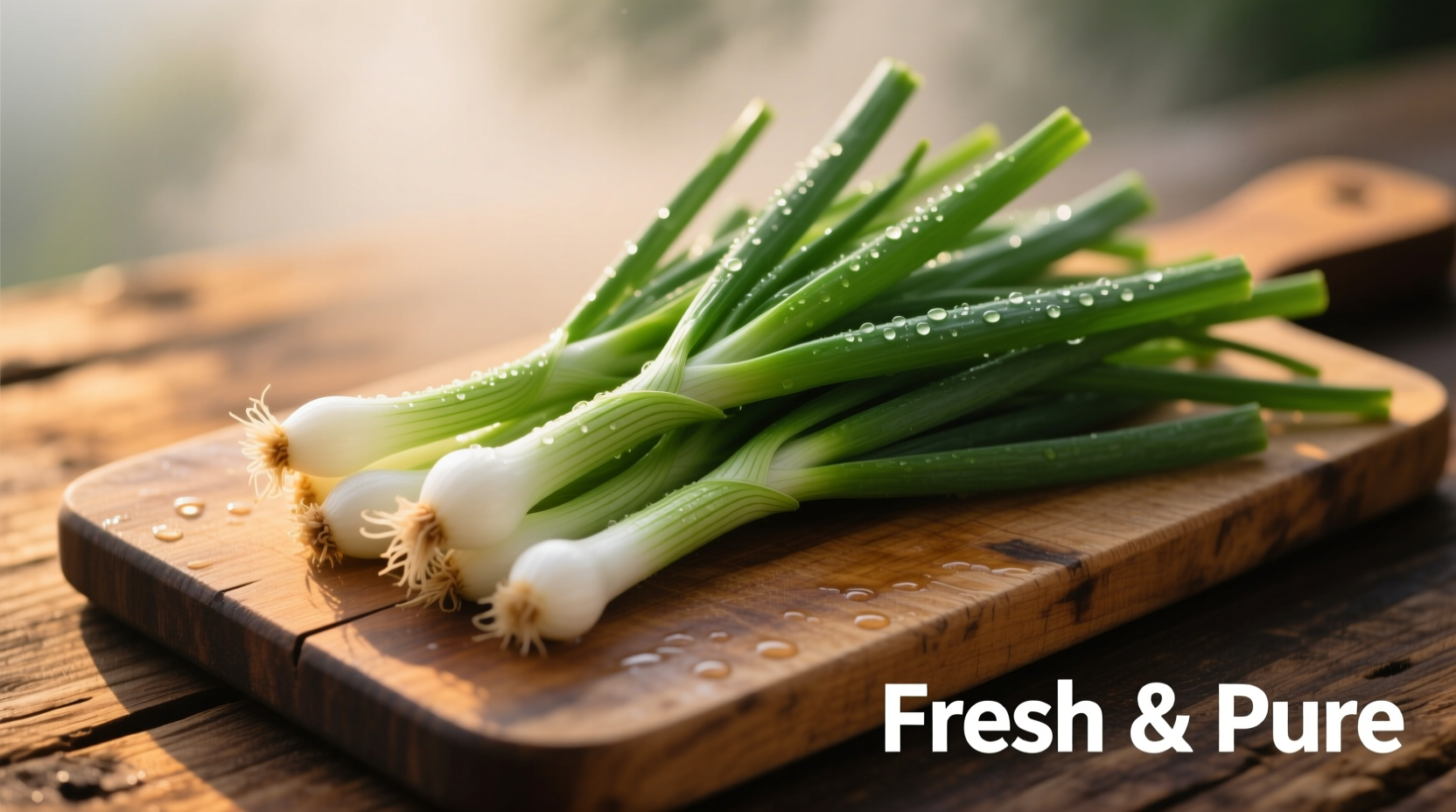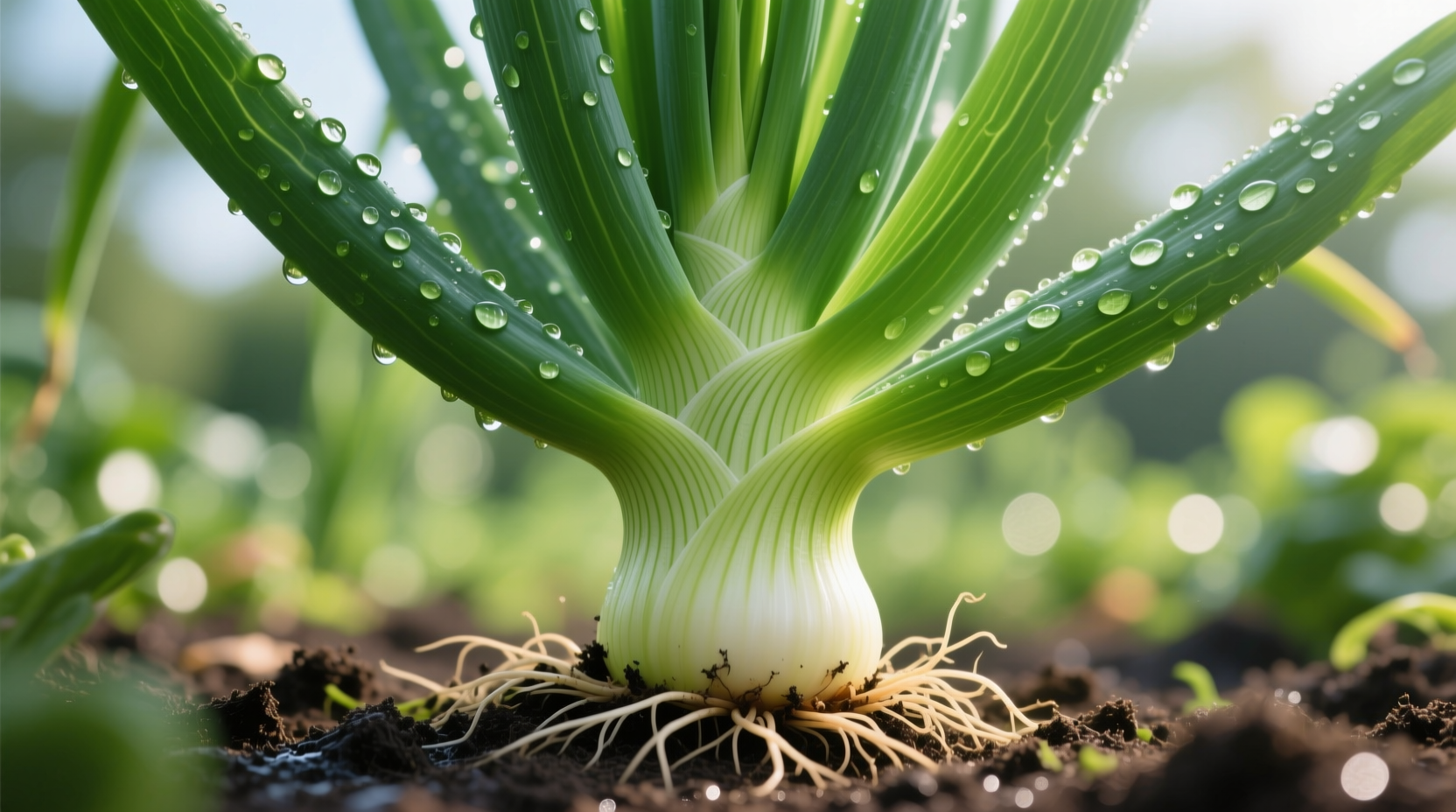Discover exactly how to select, store, and maximize the culinary potential of big green onions with this comprehensive guide. Whether you're a home cook looking to elevate everyday meals or a culinary enthusiast exploring ingredient nuances, you'll gain practical knowledge that transforms how you use this versatile vegetable.
What Exactly Are Big Green Onions?
Big green onions represent a specific stage in the onion's growth cycle. Unlike mature bulb onions, these are harvested early when the stem remains predominantly green and the bulb has only begun to form. This harvesting timing creates their signature mild flavor profile and crisp texture.
The term "big" typically refers to mature scallions that have grown larger than standard varieties, offering more substantial white bulbs while maintaining the characteristic long green stalks. These are different from Welsh onions (Allium fistulosum), which never develop significant bulbs.
| Onion Type | Bulb Development | Flavor Profile | Best Culinary Uses |
|---|---|---|---|
| Big Green Onions | Small, underdeveloped bulb | Mild, fresh, slightly sweet | Raw garnishes, quick cooking, stir-fries |
| Chives | No bulb | Delicate, grassy | Finishing garnish, delicate sauces |
| Shallots | Fully developed bulb | Sweet, subtle garlic notes | Sauces, dressings, slow cooking |
| Yellow Onions | Large bulb | Strong, pungent when raw | Caramelizing, long-cooking dishes |
Selecting the Freshest Big Green Onions
When choosing big green onions at your local market, look for specific quality indicators that ensure maximum flavor and shelf life. The best specimens display crisp, vibrant green stalks without yellowing or wilting. The white bulb section should feel firm to the touch with no soft spots or sliminess.
Professional chefs consistently select onions with roots still attached, as this indicates recent harvesting. The transition zone between white and green should show no signs of drying or separation. Avoid any bunches with flowering tops, which indicates the onion has passed its prime harvesting window.

Optimal Storage Techniques and Shelf Life
Proper storage dramatically extends the usability of big green onions. When stored correctly, they maintain peak quality far longer than most consumers realize. The USDA Agricultural Research Service confirms that proper refrigeration techniques can preserve freshness for up to three weeks.
Big Green Onion Freshness Timeline
- 0-3 days: Peak flavor and crispness, ideal for raw applications
- 4-10 days: Slightly milder flavor, perfect for cooking
- 11-21 days: Gradual softening, best used in soups and stews
- 22+ days: Significant quality decline, not recommended for use
For maximum longevity, trim the root ends and store in a glass of water in the refrigerator, changing the water every two days. Alternatively, wrap them in a slightly damp paper towel inside a perforated plastic bag. Never wash before storage, as excess moisture accelerates spoilage.
Culinary Applications: Maximizing Flavor Potential
Understanding how to use different parts of the big green onion transforms your cooking. The white and light green sections contain more sulfur compounds, delivering a sharper flavor ideal for cooking. The dark green portions offer a milder, grassier taste perfect for raw applications.
Professional chefs employ specific techniques to extract maximum flavor:
- For stir-fries: Add white parts first, green parts in the last minute of cooking
- For soups and stocks: Use the entire onion, including root ends for depth
- For garnishes: Slice green sections on a sharp diagonal for visual appeal
- For grilling: Keep whole and brush with oil to prevent burning
When substituting in recipes, remember that one cup of chopped big green onions equals approximately half a medium yellow onion, but with significantly less pungency.
Nutritional Benefits Backed by Research
Big green onions deliver impressive nutritional value beyond their culinary versatility. According to the USDA National Nutrient Database, a single cup (100g) of chopped green onions provides:
- 27% of your daily vitamin K requirement
- 23% of your daily vitamin C needs
- Significant amounts of vitamin A and folate
- Only 32 calories per serving
Research published in the Journal of Agricultural and Food Chemistry confirms that the sulfur compounds in green onions support cardiovascular health and possess anti-inflammatory properties. Unlike mature onions, big green onions retain higher concentrations of certain antioxidants due to their younger growth stage.
Avoiding Common Culinary Mistakes
Even experienced cooks make these frequent errors with big green onions:
- Discarding the root end: The small white bulb contains concentrated flavor—use it!
- Overcooking the green parts: They should retain some crispness after cooking
- Using only one part: Combine white and green sections for balanced flavor
- Storing at room temperature: This dramatically shortens shelf life
When chopping, always use a sharp knife to prevent bruising the delicate cells that release flavor compounds. For maximum flavor release, chop 15 minutes before using to allow enzymatic reactions to develop complex flavors.
Frequently Asked Questions
Can you freeze big green onions for later use?
Yes, you can freeze big green onions, though texture changes occur. Chop them first, spread on a baking sheet to freeze individually, then transfer to an airtight container. Frozen green onions work best in cooked dishes but lose crispness for raw applications. They maintain quality for up to 6 months when properly frozen.
What's the difference between big green onions and leeks?
Big green onions have a single cylindrical stalk with a small bulb, while leeks feature broad, flat leaves forming a layered structure without a distinct bulb. Leeks offer a milder, sweeter flavor and require thorough cleaning between layers. Green onions work well raw or quickly cooked, while leeks typically need longer cooking times to become tender.
How do you grow big green onions at home?
Grow big green onions in well-draining soil with full sun exposure. Plant seeds ¼ inch deep, 1 inch apart, in rows 12 inches apart. Water consistently but avoid overwatering. Harvest when stalks reach pencil thickness, typically 60-80 days after planting. For continuous harvest, plant new seeds every 2-3 weeks throughout the growing season.
Why do my big green onions taste bitter?
Bitterness typically occurs when green onions have bolted (started flowering) or been stored too long. Excessive heat during cooking can also create bitter compounds. To prevent bitterness, use fresh onions, avoid overcooking, and separate the more pungent white parts from the milder green sections when appropriate for your recipe.











 浙公网安备
33010002000092号
浙公网安备
33010002000092号 浙B2-20120091-4
浙B2-20120091-4